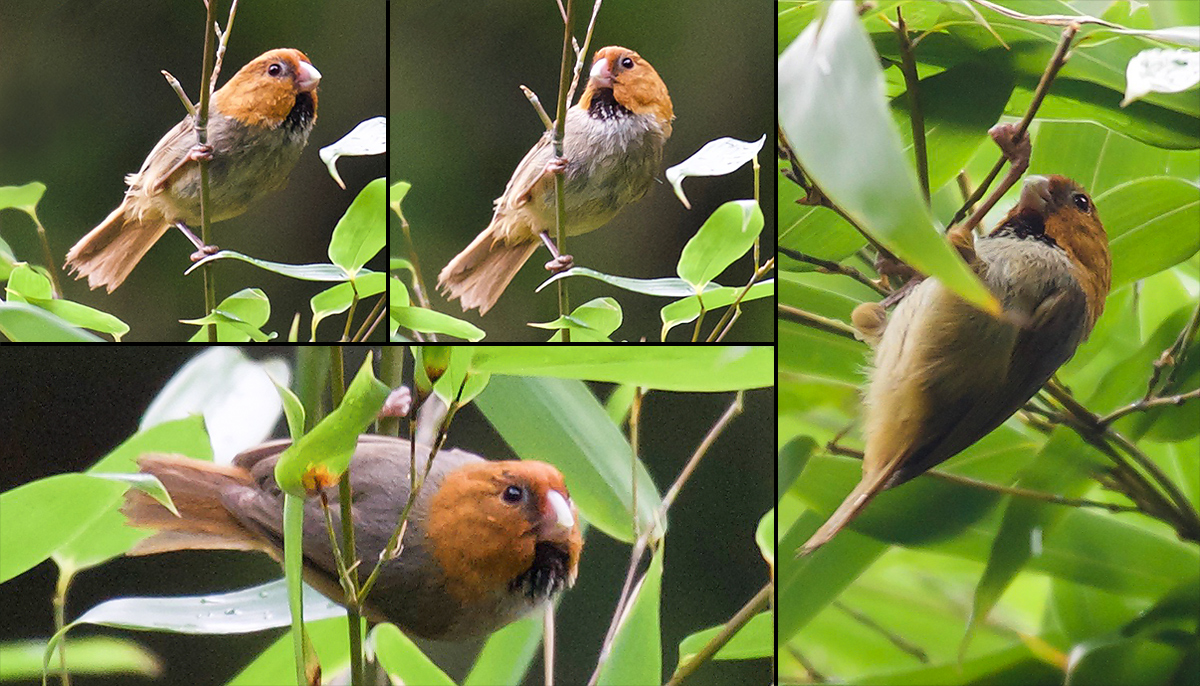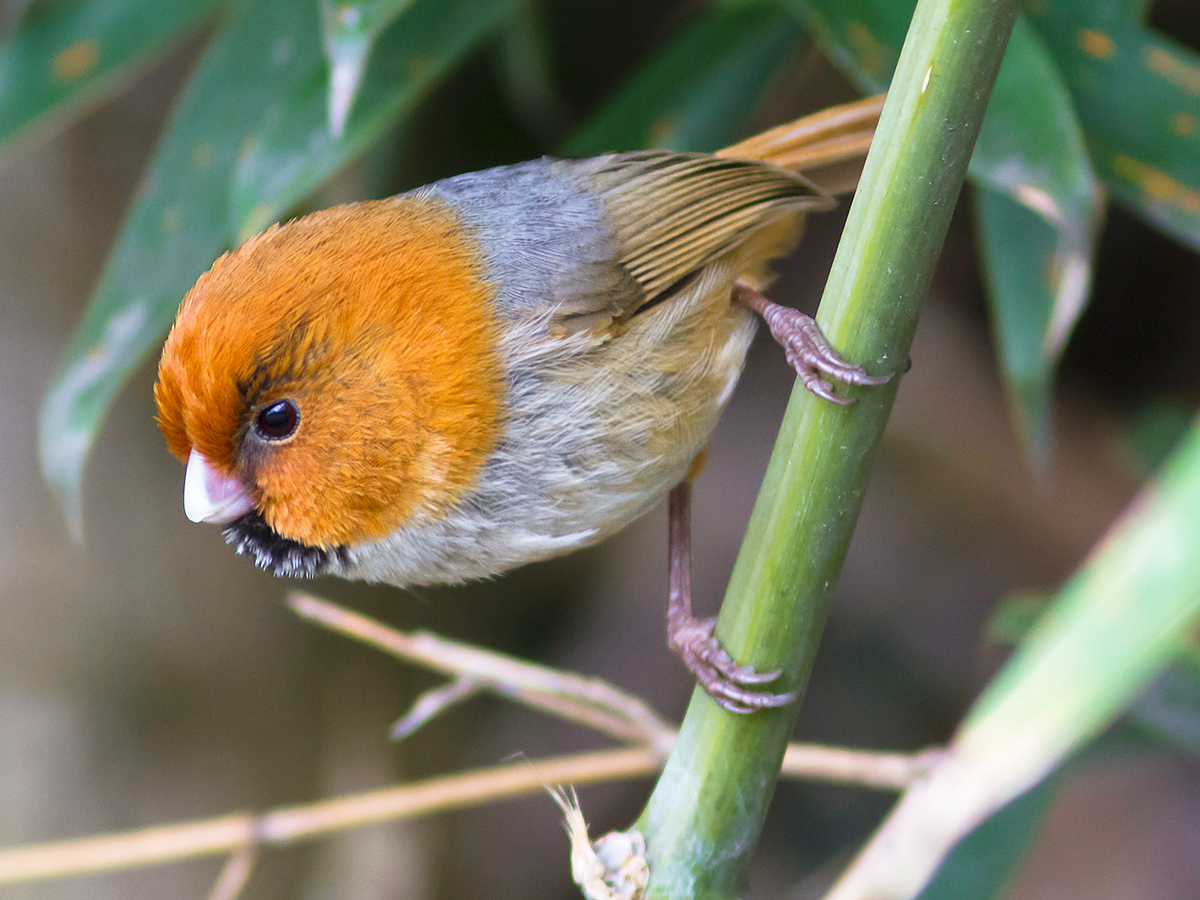by Steven Bonta
for shanghaibirding.com

The first weekend of June I birded Tianmushan, the mountain in Zhejiang southwest of Shanghai. Accompanying me was my friend, Shanghai-based bird photographer Kai Pflug. We drove down from Shanghai on Friday afternoon and set about looking for one of his two target birds, Short-tailed Parrotbill, which I had found there in profusion a month earlier. Unfortunately, the birds proved elusive, but we made some other nice finds. We found a pair of Brown-breasted Bulbul in a grove of young bamboo just above the village, which turned out to be (along with the observations of another birder that same day) the first eBird record of this species from Tianmushan. I took Kai to a spot along the stream where I had noted Brown Dipper the month before, and, somewhat to my surprise, found a pair at the spot. Also noted that first afternoon were Red-billed Leiothrix and Hair-crested Drongo. We checked into our hotel Friday evening with plans to head for the mountaintop forest area called Longfengjian (30.344148, 119.440201) very early the next morning, in hopes of finding Kai’s other target, the rare and local Buffy Laughingthrush. My aim, having already seen these and many other birds, was simply to keep my eyes open and enjoy the wild remote forest scenery.
We entered the protected area of Longfengjian Forest just past 5 a.m., long before the gates officially open, and soon began noting the usual flocks of Eurasian Jay and other birds just waking up. I left Kai at the spot where he had taken many photos two years earlier, and headed off on my favorite route into the deep forest off the main trail. I soon began encountering large flocks of the cheeky and curious Buffy Laughingthrush, and had no problem calling them to me. Following my favorite secret trail deep into the forest, I also summoned up several extremely tame flocks of Indochinese Yuhina, small, crested birds with buzzy, insectile calls that flocked to within arm’s reach as they tried to identify the source of the pishing sound I was making. Collared Owlet pinged in the foliage, but, as usual, I was unable to catch even a glimpse of one (although we spotted one out in the open along the road the day before). Grey Treepie and Huet’s Fulvetta were also in evidence. I recorded Great Spotted Woodpecker, Grey-headed Woodpecker, and Grey-capped Pygmy Woodpecker, but no piculets. As always, it was a restorative experience being among the giant trees in this primeval forest, now fully leafed out. The weather was picture perfect. From a hidden viewpoint on a knife-edge ridge among the sprawling forest landscape, I looked out across a wide panorama of the northern Zhejiang mountains.
I heard a loud retching cough from the woods and recognized it as a muntjac or barking deer, a type of animal familiar from India and Sri Lanka, and one I had never seen or heard before in China. I assumed that muntjacs had all long since been poached out of these mountains, but here was one roaring at me from somewhere deep in the underbrush. Over the next hour or so I encountered several more, even managing brief looks at two of them as they faded into the forest. I noted the brownish-gray coloration of their pelage, different from the more reddish-brown color I usually associated with muntjacs. These were Hairy-fronted Muntjac, a rare and little understood species whose limited southeast China range includes Tianmu and other wild mountains in Zhejiang, Anhui, Jiangxi, and Fujian. These were the first mammals larger than a squirrel that I had ever observed at Tianmushan, and my encounter with them made me reevaluate my skepticism about the park’s claims that both Clouded Leopard and Leopard inhabit this forest.
I also saw several female pheasants flying or running off into the forest, but, unlike the previous month, when I had good looks at both Elliot’s Pheasant and Silver Pheasant, I was unable to ascertain the species of any of them.
Reuniting, Kai and I then took the long, steep hike down the mountain along virtually empty trails, following the thousand foot-high stone staircase-cum-trail that left my legs gelatinous. Along the way we did see several White-crowned Forktail and Plumbeous Water Redstart. Our hotel was near the end of the trail, so after a quick lunch, we took Kai’s car along the road in some secondary growth and bamboo scrub. We found a nice fruiting mulberry tree that was attracting hordes of birds, including Red-billed Starling, Mountain Bulbul, Black Bulbul, and Chestnut Bulbul, and a noisy flock of glorious Red-billed Blue Magpie. An Indian Cuckoo called consistently from the nearby woods, but never showed. Kai settled down happily in his parked car next to the tree to take pictures, while I explored the surrounding bamboo groves. The best sighting of that afternoon for me was an adult male Amur Falcon that sailed right over the mulberry tree—an unexpected lifer for me. A few minutes later, an Amur Paradise Flycatcher showed up at the same spot, marking perhaps the first time in ornithological history that the only two bird species with “Amur” in their name were recorded at the same place and time! Later on, we went looking again for Short-tailed Parrotbill, but once again, without success.
When I got back to my hotel room, I found to my chagrin that one of my socks was soaked with blood, courtesy of a forest leech that had managed to get in and out of my shoe undetected.
The next morning, we again left very early, this time to try to find the parrotbill—but once again, we were stymied. However, I saw another Amur Falcon and a pair of Black Eagle, in addition to more of the lovely Red-billed Blue Magpie and quite a number of Streak-breasted Scimitar Babbler and Rufous-capped Babbler, so I counted it a morning well spent. The Brown-breasted Bulbul we had noted two days earlier were still in evidence.
At one point, I noticed an odd prickling sensation on my lower leg and assumed some ants had crawled up my shoe. Then I felt it on the other side of my calf, and pulled up my pants leg to see what was going on. A huge Scolopendra centipede, at least 5½ in. (14 cm) long, with a blood-red head and legs and bluish gray body, was crawling across my skin; it had apparently given me a slight nip, but when exposed, it scampered back down my leg and away over the leaves. Given its size and the potency of its venom, I was very lucky not to have been bitten in a serious way.
I also birded a lower-elevation forested area looking for Great Barbet and Brown-chested Jungle Flycatcher calling from the dense foliage all around. By late morning, it was hot and we decided to call it a trip. As we were packing our things back at the hotel, a Chinese Bamboo Partridge began calling loudly from the bamboo right outside my window. With the traffic on the expressway very light in the early afternoon, we were back in Shanghai by 3 p.m. Overall, Tianmushan in early June was fairly active, although I was disappointed not to record either Koklass Pheasant or Short-tailed Parrotbill, two species that are normally fairly easy to find.
EBIRD LISTS
Here are my lists for the three days at Tianmushan:
PHOTOS FROM TIANMU, BY KAI PFLUG
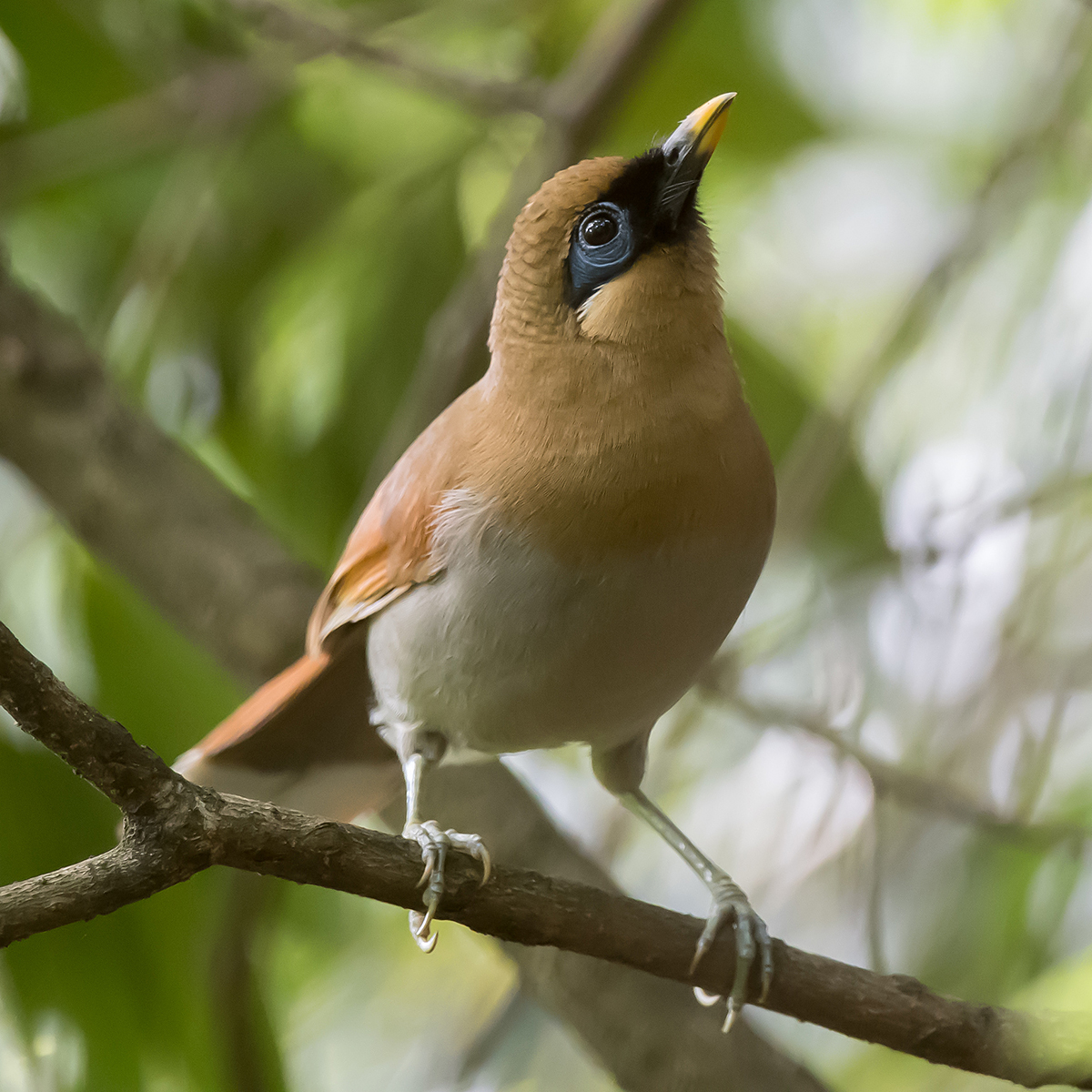
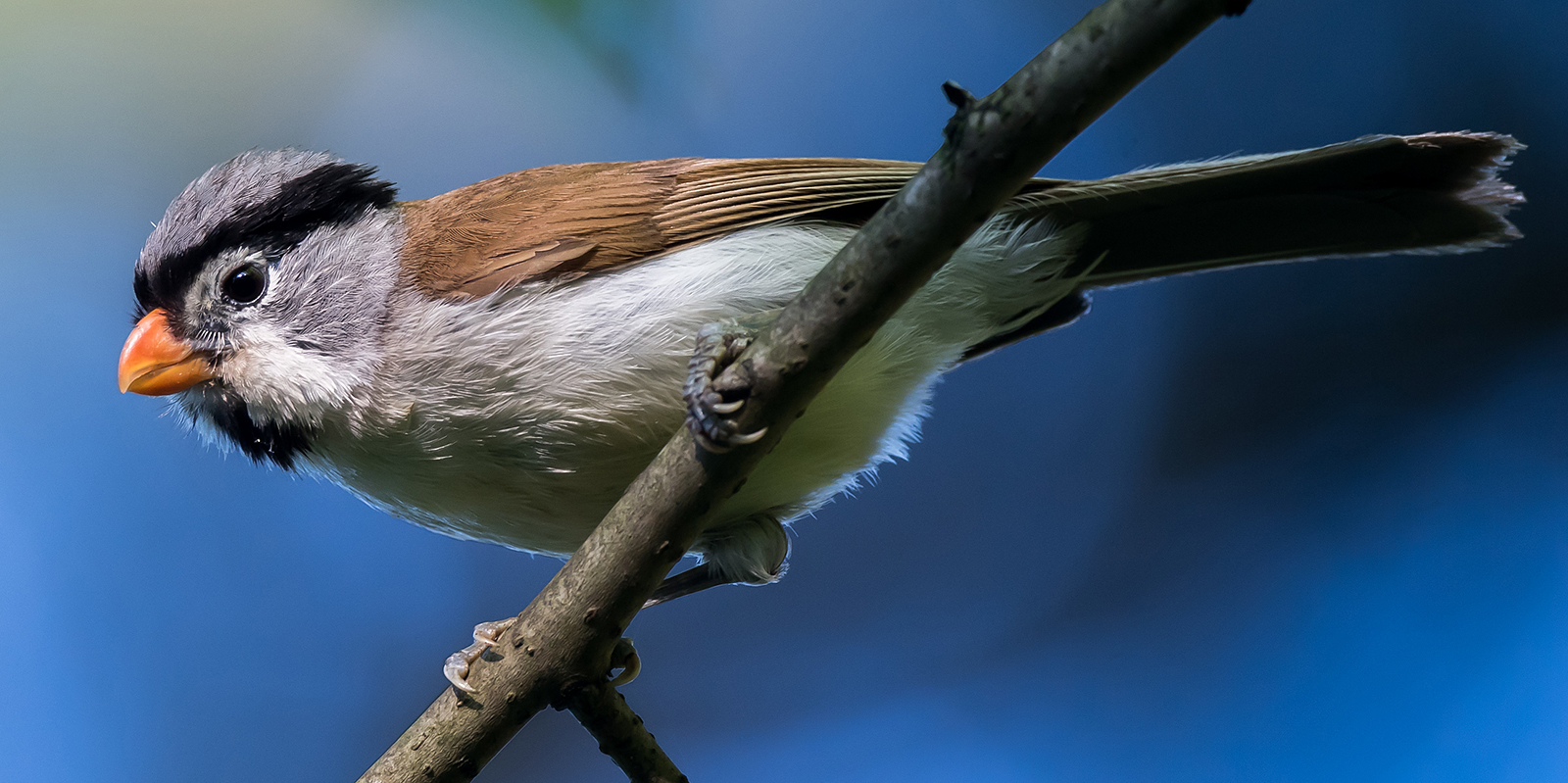
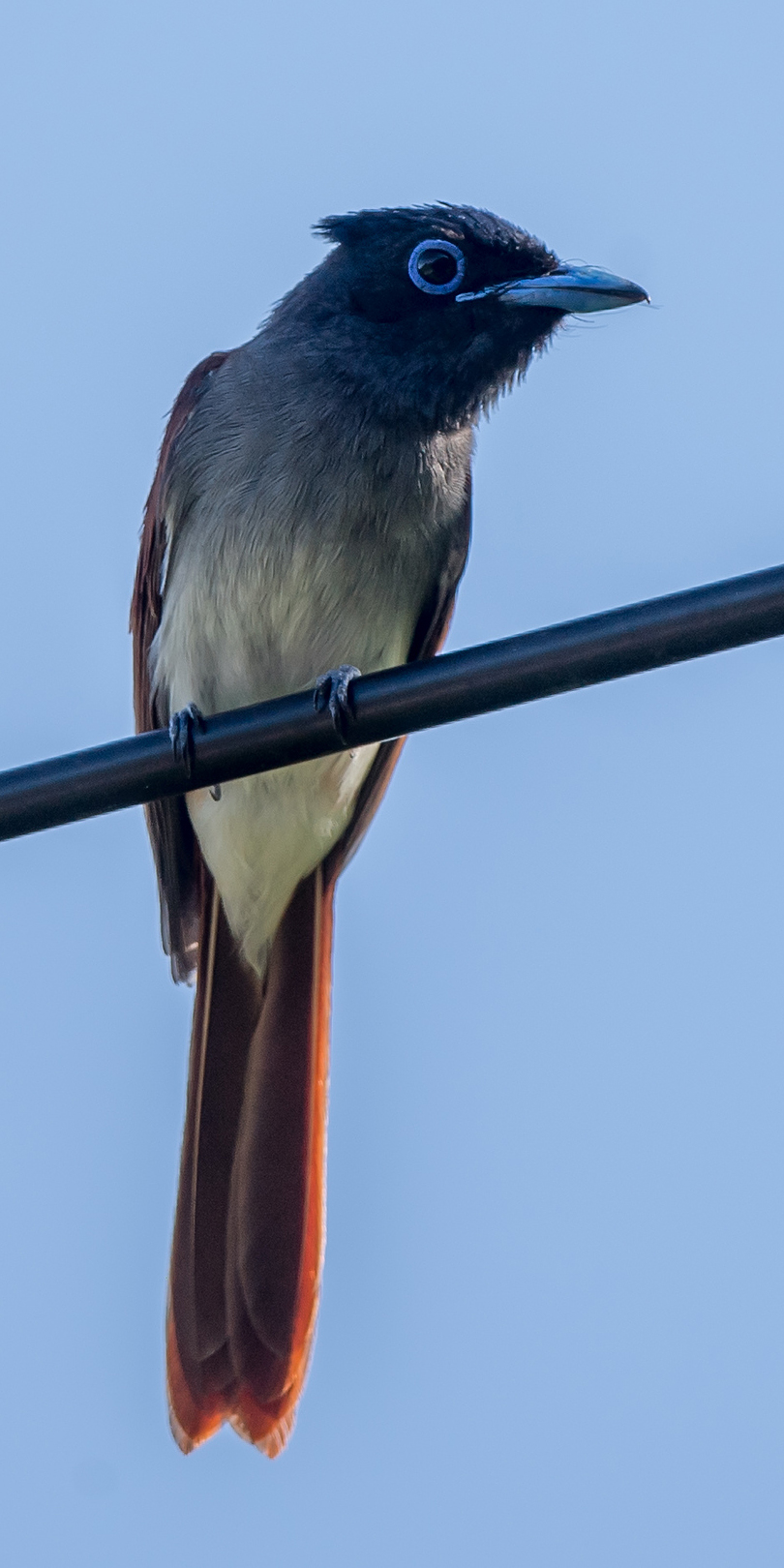
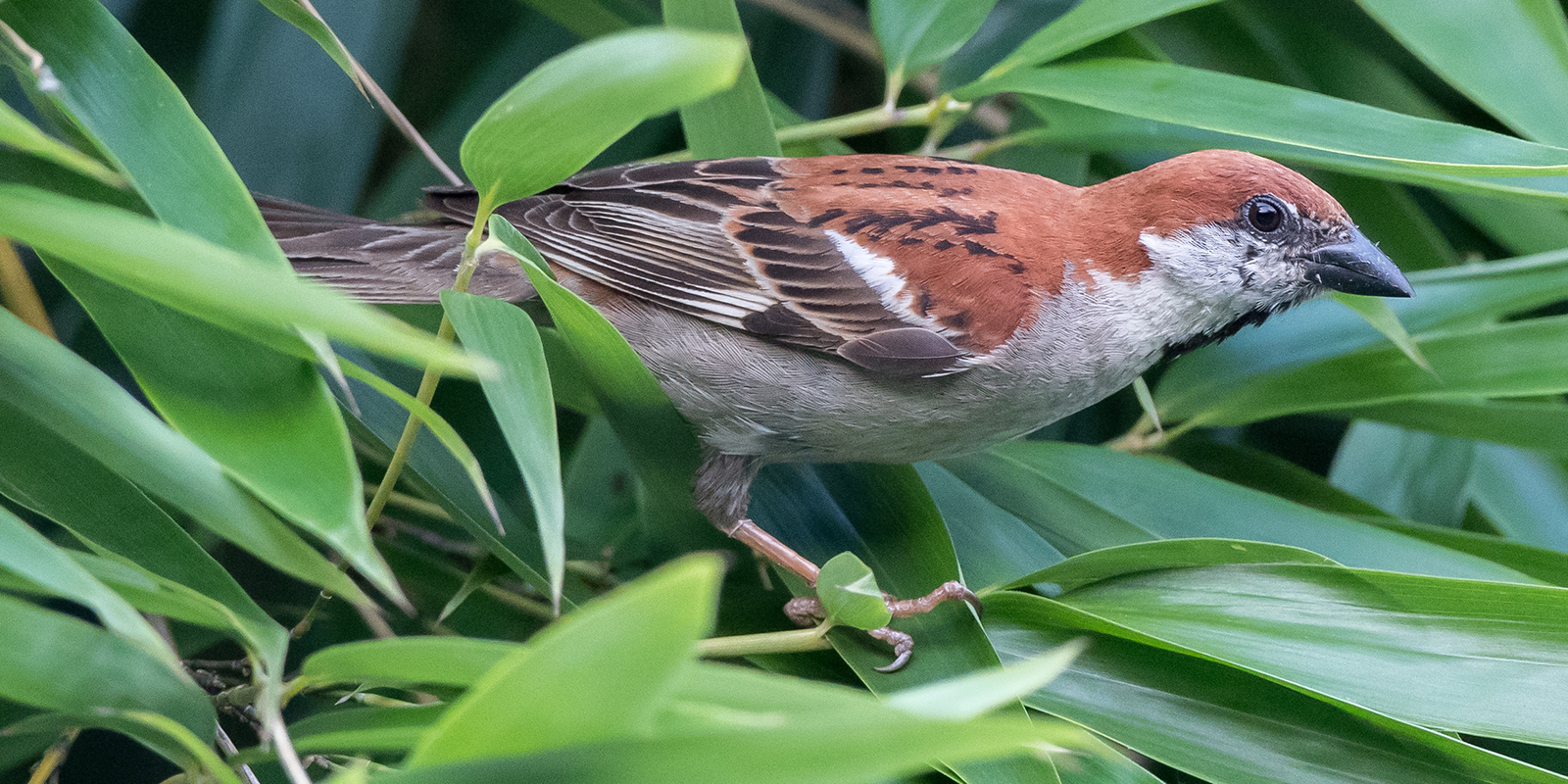
FURTHER READING
Muntjacs

• Gongshan Muntjac Research Page: See photos and hear sound-recording of Gongshan Muntjac Muntiacus gongshanensis, a barking deer closely related to Hairy-fronted Muntjac M. crinifrons.
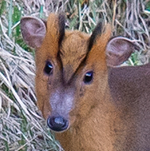
• Reeves’s Muntjac Research Page: See photo from Taiwan of Formosan Muntjac Muntiacus reevesi micrurus, a ssp. of Reeves’s Muntjac.
Tianmu Mountains
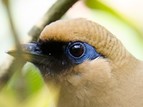
• Tianmushan: A Must See Site for Shanghai Birders: This series introduces you to the mountain range 270 km (168 mi.) from Shanghai. For a deeper understanding of the birds of east-central China, birding the Shanghai coast is not enough. The Tianmu Mountains offer Buffy Laughingthrush and many other south China species.
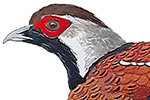
• Tianmushan in Autumn: Steven Bonta visits the Tianmu Mountains in the underbirded months of November and December and finds key Tianmu birds Elliot’s Pheasant, Short-tailed Parrotbill, and Moustached Laughingthrush.
Other Tianmu
• Tianmushan Index Page
• Koklass Pheasant Highlight Tianmu Trip
• Trip Report: Tianmushan, 1–3 April 2019
South China
• Emeifeng, a Bird Rich Mountain in Fujian
• Birding China’s Hainan Island
• Nonggang Babbler: From ‘New to Science’ to ‘Automatic Tick’

